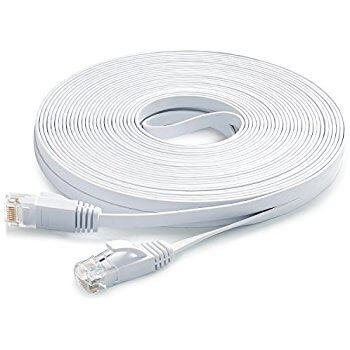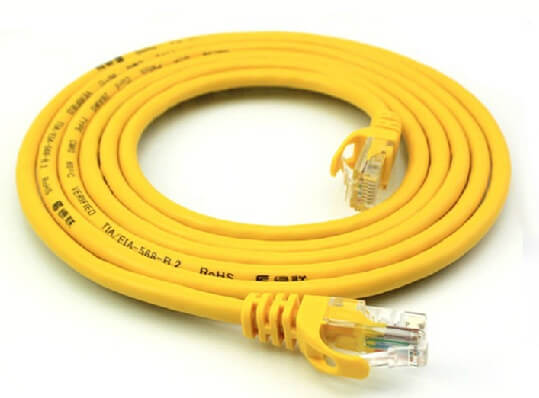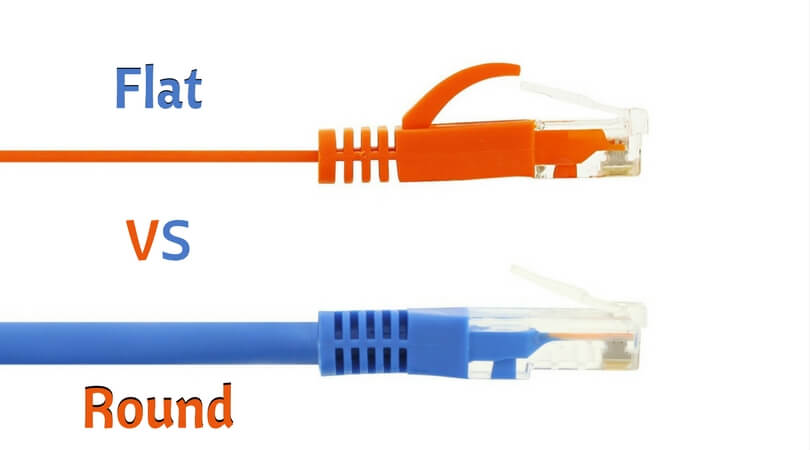Setting up a home or office network needs some particular devices like routers, modems, switches, hub, Ethernet cables, crimpers, RJ45 connectors, etc. Some of them are optional which only need when you have higher setup requirements, while some of them are mandatory like the best Ethernet cable.
Generally, users prefer to choose among the Cat5, Cat5e, Cat6, and Cat7 Ethernet cable types. But many of them don’t know that there are actually two different types of network Ethernet cables are available in the market; Flat Ethernet cable and Round Ethernet cable. Today, I will make a comparison of Flat Vs Round Ethernet cables and show you the main difference between these cable types.
Let’s proceed to the difference now.
Contents
Flat Vs Round Ethernet Cable
The Ethernet cables, many times, are the last things mentioned in setting up a wired internet network. But, they play a significant role in network speed and accuracy along with its stability depending on the type of cable. Here, I will explain the difference between the flat and round Ethernet cable and also help you choose the better among them both.
Flat Ethernet Cable
After about ten years of World War II, the Cicoil Corporation from California made the flat Ethernet cables for the IBM computers. Since then, they are used by the field like the military, robotics, aerospace, and other where high-end computing is in demand. The Flat Ethernet Cables provide efficiency in packaging, flexibility in usage, ability to reduce electronic noise & vibration during operation. 
Round Ethernet Cable
The round Ethernet cable is a form of an insulated wire that contains some layers of filler substances. All these together keep the original circular shape which in result helps in minimizing the heating in the Ethernet cables due to the friction. Such filler material also protects the cord against some outer elements. In the industrial and manufacturing fields, round electrical wires are mostly used.
Flat Ethernet Cable Vs Round Ethernet Cable
Though specific industries use both types of Ethernet cables, both have some advantages over each other. Let’s take a look at the comparison of flat Vs round Ethernet cables.
1. Due to the multiple layers of wires and other material which are used to reduce the heat inside the round cable, a fractional amount of heat is generated. This happens because of the motion cycles that are repeating in the wire. Such a process does not occur in flat cables.
2. The electrical quality of the conductors in the flat network cable remains constant as they are maintained parallel to each other. Also, the physical strength remains the same. This equality does not happen in round cables.
3. Unlike the round Ethernet cables, the flat electrical wires do not include the fillers or low-frictional cables which in turn reduce volume and weight both.
4. The round cables are more durable, easy to install, and can fit in any tight space quite comfortably. And so, they are best while using for data centers. Flat cables do not have such a high level of capability.
5. The flat Ethernet cables require more maintenance than the round wires. Also, they cannot provide as high uptime as the round Ethernet cables deliver.
Are Flat Ethernet Cables Better?
There is no doubt that the flat Ethernet cables provide more consistency in the electrical equality of conductors. Also the lacking of fillers, insulating tapes, and other material reduces the weight and volume of the flat wires which offer more space efficiency. They also have a higher density of cross-section connectivity of wire-to-cable than the round Ethernet cables. But, due to all of these, they have less durability and high maintenance costs than the round Ethernet cables. The flat wires are less sustainable than the round ones as they do not have any protective filler around them.
The modern flat cables evidently designed to overcome all the missing functionality and features of the first flat Ethernets. And in many ways, they succeeded too. Also, they are cheaper than the round ones.
So, I can say that the current flat Ethernet cables are better than the round networking wires, unless if you need a highly capable networking setup for your data centers. At least, you should give them a try for once.
Let me know your thoughts in the comment section below.



Thanks for the excellent comparison of the Flat Vs Round cables. You provided a lot of good unknown info and had made my choice easier.
I am buying the Flat for a small business set up for wiring FIOS and Digital VOIP.
My only other choice now is CAT 5e, CAT 6 or CAT 7?
Cat7 has the fastest transfer transport speed, I would suggest cat7.
This was very helpful in order to find which one was better thank you. The round to me seems better for home use while the flat is better for business.
Great article! Very concise. Lots of information given in a very easy to understand manner. I was wavering between purchasing one of the two cables. Your article helped me arrive at a decision very quickly. Thank you again.
The only real reason for using the flat cable is for it to lay under the carpet for home installation. Its great to know that they are just as good if not better than the round ones.
I used the same process with a flat hdmi cable which works equally as well as a round cable.
Cat 7 – the price is low enough that it isn’t worth looking at anything less.
Should be careful that the flat uses twisted pairs as I am hearing that some do not while all round cables built to standard do. Twisted pair cables when combined with the differential mode transmission in ethernet ports, reject common mode (external) interference that can degrade speed of transmission, even when unshielded (UTP). I suspect that the maximum cable speed would be less for flat as the electrical properties of the insulation are not geometrically uniform. I would therefore use the flat more for aesthetics and then only for relatively short runs.